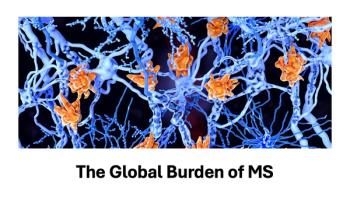
Now is the opportune time for pop health management
As technology has evolved, the potential of population health management as a tool to improve quality and reduce costs has expanded.
Healthcare reform, emerging payment models that reward quality versus volume, and technology are driving providers toward a trend that payers have embraced for years: population health management (PHM), according to a recent KPMG
In addition, provider organizations are realizing that effective PHM and cost reduction requires a holistic view of data, including claims, medical records and other information from throughout the healthcare ecosystem. Not only have payers invested in data analytics tools and in-person chart reviews to validate diagnoses and identify care gaps, they have also worked to ensure that the highest-risk patients are receiving the care necessary to avoid emergency department or hospitalization utilization.
ShultzHowever, unlike periodic chart reviews, provider organizations have access to technology that can automatically mine data and offer real-time notifications regarding high-risk patients based on their electronic health record (EHR) and payer claims data. This holistic approach to data management offers providers the opportunity to successfully manage population health, with continued support from payers, in ways that were never truly feasible before.
Electronic records open the door
When nearly all providers used paper charts, monitoring populations was an extremely time-consuming, labor-intensive process, requiring pulling charts, manual data entry, and manual analysis. Historically, payers attempted to assist providers with this endeavor by offering guidance based on claims data, but these efforts were often met with resistance.
Part of the resistance was that claims data was too old (45 to 120 days) to be useful for effective interventions. By the time the health insurer received the claims data and notified the provider about care gaps impacting their high-risk patients, many of those patients had already visited the emergency department, been treated by their doctor, or resumed adherence to their treatment plan.
With the arrival of the The Health Information Technology for Economic and Clinical Health (HITECH) Act, and associated incentives to adopt EHRs, providers began building patient registries to monitor high-risk patients with chronic conditions, recognizing their collective strain on healthcare costs, according to the Robert Wood Johnson Foundation’s report
Real-time data requires real-time monitoring
Homegrown patient registries eventually gave way to automated data warehouses and other PHM tools that analyze data and deliver actionable intelligence to providers. Many of these systems, however, are still based solely on dated claims data, so provider organizations must still verify these notifications and reports against their EHRs.
Lately, more advanced PHM platforms have emerged that can integrate with EHR, claims, pharmacy, and other data sources, delivering real-time updates about their patients. Organizations can also calculate and assign a risk level to each patient and identify care gaps relative to evidence-based guidelines, accountable care organization (ACO) and the Healthcare Effectiveness Data and Information Set (HEDIS)measures, or other metrics. These systems even include mobile tools that allow patients to wirelessly share readings from health-monitoring devices from their homes.
PHM tools, as well as the workflows they support, require care coordinators or care managers to continually monitor activity and generate reports to guide their outreach, especially for platforms that offer a holistic data perspective. A common ratio that many provider organizations use is one care coordinator for every 150 patients. However, organizations with more advanced technology can safely and effectively manage high-risk populations with a higher number of patients per care manager.
Holistic data encourage provider PHM buy-in
Even as provider willingness to collaborate with payers on patient care has increased, it is safe to assume providers would always prefer data from their own charts to support their clinical decisions rather than data from payers. This is why real-time EHR data is so crucial for effective PHM.
Payer-supplied data will continue to play an important role in supporting successful PHM by sharing claims information from unaffiliated providers and facilities.
Payers also benefit from providers improving their PHM competency in other ways. Better oversight of high-risk patients can reduce avoidable hospital admissions, emergency department visits, ambulance calls, and other adverse events. The key to arriving at these better outcomes, as payers have known for years, is a holistic approach to data analysis.
Jerry Shultz is president of
Newsletter
Get the latest industry news, event updates, and more from Managed healthcare Executive.






















































